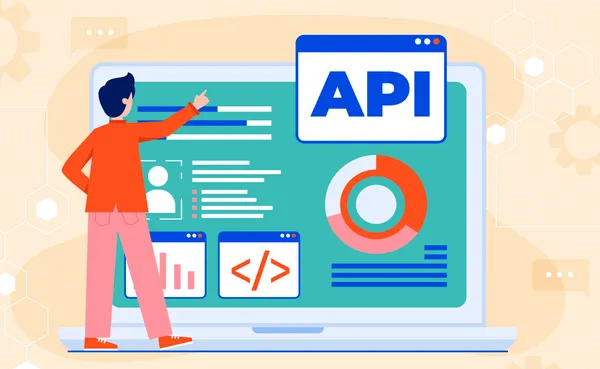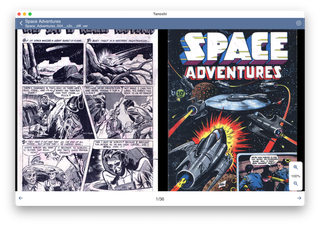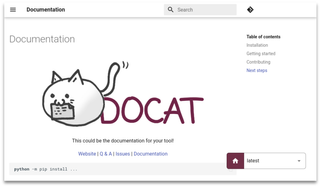Wouldn’t it be great if software tools could communicate with one another and pass data between them? Well, there is a way, and that is through using an open API. Software engineers will be intimately familiar with the concept of an open API but this article is for those who would like an introduction to the topic.
Instead of recreating the same technology again and again, developers can take advantage of the apps that already exist. This creates an ecosystem of software that is more valuable for users and stimulates innovation. Third-party developers can benefit from the power and features of an existing tool instead of trying to reinvent the functionality that it offers.
It’s not just developers who need to know about open APIs. For example, you could be a product manager who needs to understand the capabilities for extending the use of your software product. Open APIs can be very beneficial for promoting the widespread popularity of a product because it means it can interact much more effectively with other systems.
You don’t have to be an extremely technical person to understand what an open API is. Even if you only have the most basic interest in development, it can still be useful to know what an open API is and how it works.
What is an Open API?
An open API enables developers to connect to a software platform without having access to its source code. Just like a regular API (Application Programming Interface), developers can create their own software tools to make calls and share API documentation, but an open API is available to anyone. That’s why an open API is often called a public API instead.
Essentially, the open API allows two software tools to open up the channels of communication between them without having to know exactly how the other one works. This means that companies can maintain proprietary tools while still having the option to integrate with other apps for enhanced functionality.
Open APIs are different from closed APIs because they exist to be used by anyone with an internet connection. Closed APIs, on the other hand, are only available to users who are employed by the company that created the API, usually because of enhanced security or the need to keep information private.
What are the Benefits of an Open API?
Using an open API means that developers don’t have to spend time reinventing the wheel. If they can integrate their software with popular products this can open up their tool to a large potential user base. Using a third-party tool that works with the open API can result in more traffic to the company’s site and potentially higher revenue.
Open APIs offer an element of standardization for how applications interact with one another. Since the API is made public, any integrated software tool communicates such as Slack in exactly the same way which results in much less work for the developer. It opens up the possibilities of using the API to much less specialized developers since getting started is much easier.
Users of the open API from a well-known product stand a much better chance of earning revenue from their new tool as potential users will already be familiar with the interface. On the flip side, new tools using the open API can bring positive attention to the companies who have released their open API to the world.
What are the Pitfalls of an Open API?
One of the pitfalls of an open API is that permission to use the API can be deprecated at any time, which has extremely negative consequences for the developers who have created connected apps. The proprietor of the API could decide to start charging for use or change the terms of service, which could present problems for users of the API. It may be unwise to base your entire business model on the use of an open API.
Another downside is the ability for anyone to simply create an open API and release it to the public. There is no guarantee that the API will work well and may be full of bugs and security issues, which will deter developers from using products released by the company in the future.
If you offer an open API you need to maintain this service and when you release updates to your app you need to make sure you don’t change the function of your API. You also might be called upon to support the developer community who uses your API which ends up taking time and resources.
How Does an Open API Work?
The great thing about an API is that people are using them all the time without realizing how they work. When someone logs into a website using their social media profile such as Facebook, that is an example of an API operating.
In short, anyone can use an API and anyone can understand an API. First, to enable an open API to work, it should be made publicly available. Before it is released, an API should be tested for bugs and weaknesses by demonstrating its use in various scenarios and environments.
An API is like a library of rules that defines how two different applications can communicate with one another for a specific purpose. There are only so many things that an API can do, and the API documentation should clearly state what actions the developer can take when using the API and how to interact with it properly. In this case, an API Developer Portal is essential for developers to understand how to integrate with an API and to ensure that their applications are communicating with the API in the correct way.
Offering an open API means an organization is opening up a particular aspect of its architecture to be used by third-party developers. Creating proper documentation using an API documentation tool will help developers to use your API and its services. When the open API works properly, this means that users could access the API’s tool without having to leave the interface of another platform. In this way, developers can extend the capabilities of the original tool by creating a service that works alongside it.
Who Uses an Open API?
The short answer is that anyone can use an open API as long as they have access to an internet connection. The API developer may be an individual or a business since there are many companies based on the use of an open API. Developers may wish to access an open API if they have an idea for a business or they may be prompted to connect to the API on behalf of an employer that wants to integrate it with their platform.
Developers may also connect to an API just for fun, for example, if they want to automatically post amusing cat memes to Twitter then they can use the Twitter open API. When it comes to using an open API, there are really no limits as long as a good set of API documentation can communicate to developers how to use it.
The providers of APIs want their users to be able to easily and simply connect with their platform to build new products that will broaden the use of their products.
Examples of Open APIs
Some of the biggest companies out there have open APIs that developers can take advantage of to build their own applications.
- Twitter – the Twitter open API allows users to integrate with platforms such as Tweetdeck or Hootsuite which you can use to schedule your Twitter posts ahead of time.
- Facebook – Facebook has an API that enables users to create photo albums or publish a post on their newsfeed. You can also use the Facebook open API to post both to Facebook and Instagram simultaneously.
- WordPress – WordPress allows users to use their WordPress site to show a live preview of their Twitter feed.
- YouTube – YouTube allows you to embed a player in your website or app or enable users to subscribe to your channel with a single click.
- Google – Google offers a detailed API that enables you to integrate with some of its many products which include AdSense and Maps.
Wrapping Up
Open APIs are used by developers who want to create third-party tools that work alongside existing apps. They negate the need to provide access to the source code, allowing companies to maintain their proprietary software while opening themselves up to an ecosystem and community. When an open API has a high uptake, this results in more positive publicity for the company and widespread adoption of their tool.
Open APIs are simple to understand even if they aren’t always that easy to work with, but the best APIs make themselves accessible to developers using thorough and available comprehensive API documentation. In fact, it’s impossible to use an API unless it has been properly documented, since developers won’t be able to understand how it works.
Using open APIs presents many opportunities for making software tools more interconnected and stimulating more interesting products to emerge from the ecosystem. Open APIs make it relatively easy for software developers to work with existing software products and extend their capabilities in new directions.





